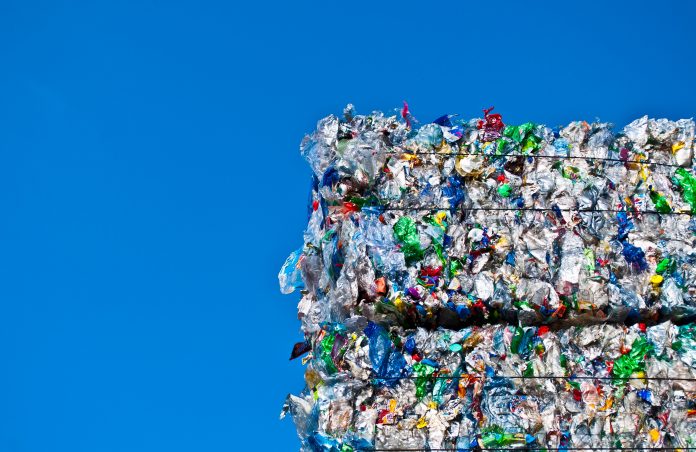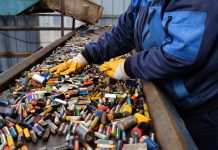Gert-Jan Gruter, Chief Technology Officer, Avantium, discusses how the chemical industry can become more sustainable, reduce plastic pollution and achieve net-zero
Plastic pollution is not a new problem. Much of the plastic used today cause environmental harm in several ways. It takes a long time to degrade, and in many cases, it doesn’t at all, leading to ever more accumulated harmful micro and nano plastic in our ecosystem. Additionally, the chemical process to produce plastics and the incineration of plastic waste increases carbon dioxide (CO2) emissions from 800 million tons CO2 in 2020 to 2750 million tons CO2 in 2050. Petroleum, an active contributor to climate change, is the main feedstock for plastics. It constitutes more than 99% of the plastic that is being used today.
The chemical and plastics industry need to employ more sustainable practices and create products and materials that feed into the circular economy. This will in turn reduce plastic pollution and overall carbon footprint. We’re already seeing great progress as governments and the private sector set net-zero targets and look for greener alternatives for our everyday products, but more drastic action needs to take place. By developing and adopting sustainable technologies, improving business practices, and collaborating with key stakeholders, we stand a better chance of reducing plastic pollution and achieving a circular, greener future.
Addressing the pollution problem with sustainable technologies
Technology is playing a key role in creating sustainable alternatives to fossil-based plastics. A lot of research and development has been conducted around plant material as feedstock by using plant-based sugars (glucose), replacing the need to use fossil fuels. By using biomass, which is “carbon above the ground” as feedstock for producing plastics, no extra carbon is added into the cycle biomass-plastic-CO2-biomass. An example of this is polyethylene furanoate (PEF), a 100% plant-based, a closed-loop recyclable plastic alternative that can be used in packaging, bottles, textiles, and more.
While it’s great to see sustainable technologies emerge, it is important that they compete or even supersede in performance with their fossil-based counterparts. With lower gas permeability towards CO2, oxygen (O2), and humidity, PEF can preserve the integrity and quality of the product within the packaging for longer periods of time, reducing food waste and extending functional shelf life. PEF is also stronger and has a better heat resistance and with better barrier properties, this enables thinner or light-weighted packaging solutions. Additionally, experiments show that PEF does show biodegradation – shown to fully degrade within a year under industrial composting conditions, rather than centuries which is the case for some of the plastics we use today. Even when plastics degrade slowly, they will not accumulate in the environment for decades/centuries like conventional plastics.
It is vital that new innovations can be reused again multiple times until the end of their lifecycle, after which they can be recycled. According to the Ellen MacArthur Foundation, it is estimated that at least 20% of plastic packaging can be replaced by reusable systems. Reusing plastic is closely linked to a decrease in plastic consumption, and therefore an overall reduction in waste pollution.
Zero waste
Aside from pioneering green technologies, businesses can do their part in reducing pollution and supporting the circular economy by driving responsible and sustainable practices. Examples of these include extensive recycling and waste management schemes. Many items that are currently discarded have value to other people, businesses, and communities. To achieve zero waste, as much as possible plastics need to be repurposed, recycled, or recovered. One of the ways this can be done by corporates is to establish incentives for products that can be intentionally reused, repaired, or recycled.
To play an active role in accelerating the transition to a circular economy, tackling the climate emergency should be factored into every business decision. Businesses need to implement practices that can have the greatest possible impact on social and environmental issues while ensuring their goals are still being met.
A collective effort
The path to a less polluted and greener future cannot be forged alone. Collaboration between businesses, scientists, and policymakers can help incite greater change. Better engagement and education with the public on the impact of climate change is key, as it can help inspire and excite current and future generations of scientists to help solve the plastic problem. Additionally, business leaders should look to work with important stakeholders to fundamentally change supply chains, materials, and practices for the better. Also, broader change can happen through regular engagement with governments and industry associations to help inform the debate and shape climate policy.
The plastic pollution problem isn’t necessarily just the material itself, but how it is made, used, and discarded. Plastics are likely to continue to be used on a mass scale for the foreseeable future. However, through technological developments, better business practices, and collaboration, we can pave the way for a cleaner, greener future.











